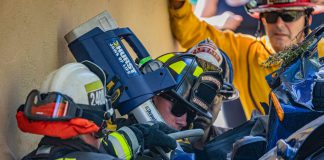I’d like to talk about several common activities involving our children, how to ensure safety and to avoid unnecessary injury.
Playground injuries, mostly from falls, account for over 200,000 emergency room visits per year. The highest risk group is five to nine years of age. Young children need close adult supervision.
Make sure that underneath the equipment there is an adequate shock-absorbing material, such as chipped wood or any type of rubber product. Also, one needs to inspect the equipment to ensure that it is in good repair.
Bicycling (300,000 emergency visits a year) and skateboarding (30,000 visits) are the leading cause of head injury accidents in children. Proper safety for these activities includes adult supervision of younger children, routine bicycle maintenance, and mandatory use of head-protective helmets. These helmets must be proper to the activity and they must fit appropriately, but most importantly they must be worn!
Swimming accidents leading to drowning, and are the second leading cause of injury death among children 14 years and younger. All pools must be adequately fenced in and have properly functioning gates. Injury can be avoided by not running around the pool, not jumping onto floating objects, and proper use of a diving board. Again, adult supervision is paramount in preventing swim-related activities.
In 1971, trampoline injuries led to the NCAA eliminating the trampoline from sports competitions. I’m sure it’s also why we don’t see this event in the Olympics.
Trampoline injuries cause 80,000 emergency visits per year, for children age five and younger. If you own a trampoline, do not allow a smaller child to be on a trampoline with a larger child, as the smaller one is 14 times more likely to be injured.
In fact, one should follow the manufacturer’s recommendations and not allow more than one person on a trampoline at a time. Safety netting around the trampoline is essential to protect a child but is not foolproof to prevent injuries.
As with all the above activities, adult supervision is mandatory.
– Terry Hollenbeck, M.D., is an urgent-care physician at Palo Alto Medical Foundation Santa Cruz in Scotts Valley. Readers can view his previous columns on his website, valleydoctor.wordpress.com, or email him at va**********@*******al.net. Information in this column is not intended to replace advice from your own health care professional. For any medical concern, consult your own doctor.












